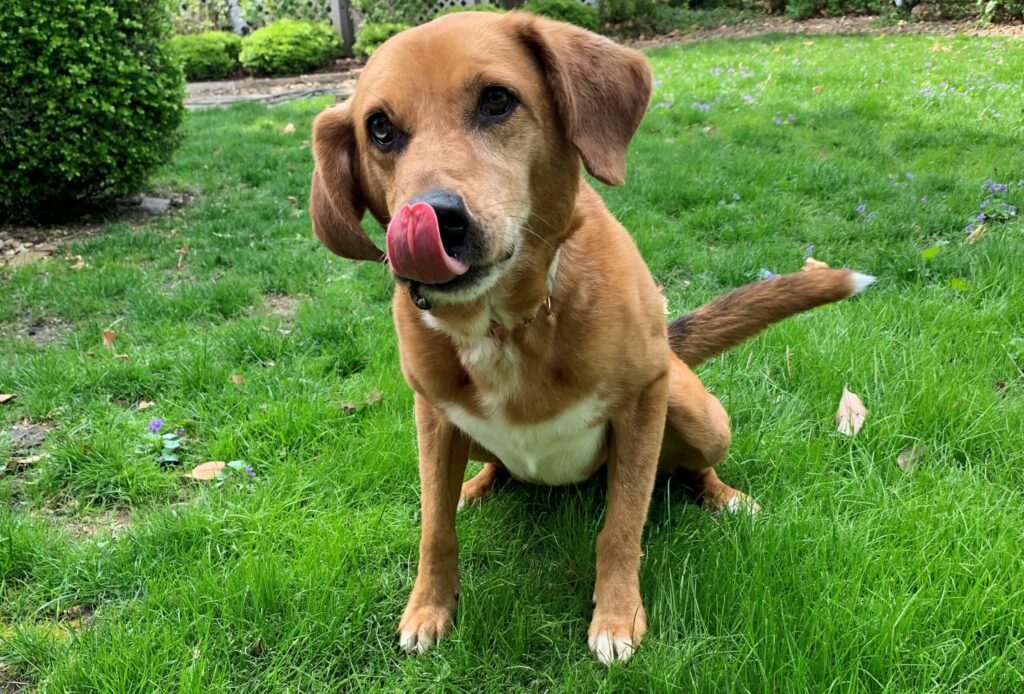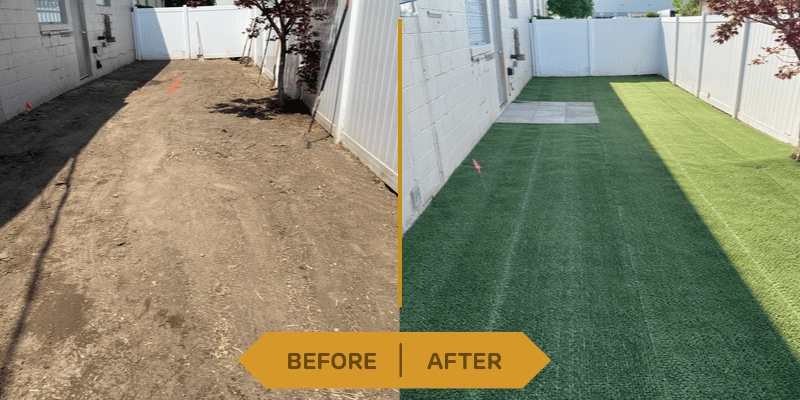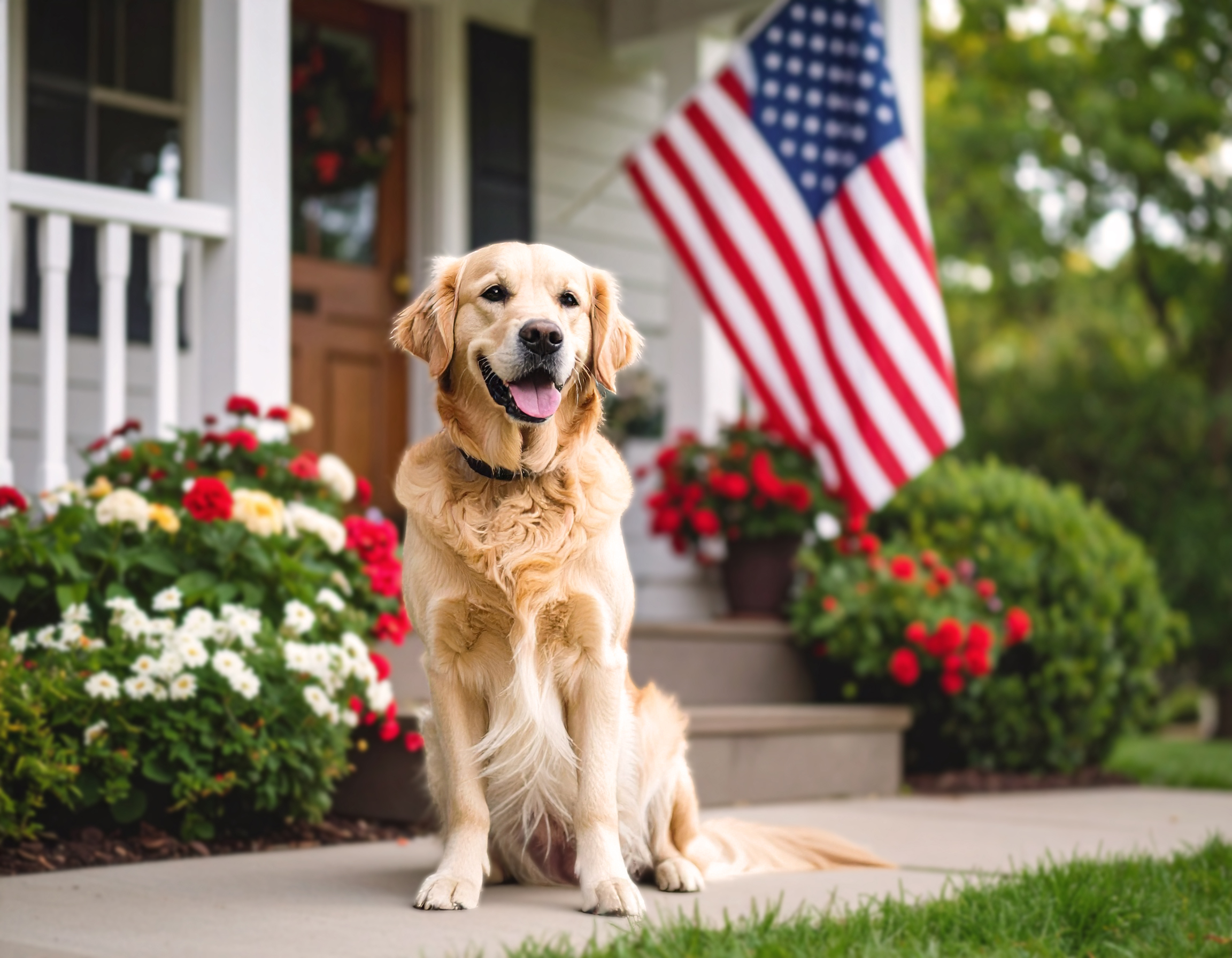4th of July Sale ** 15% OFF ** Coupon Code: COOLPAWS15 Valid July 3 - 17, 2025

We all know how much dogs love grass. They can’t get enough of it when they’re outside, from sniffing it, to rolling on it, to doing their business. Grass loves dogs, too. We’ve even written a kind of love letter from grass to dogs. (We’re a little strange here.) Many pet owners and pet business owners ask, is grass good for dogs? Grass isn’t just mutually loved by dogs; grass is good for dogs, too. From mental benefits to physical comforts, grass can provide your dog with a safe, healthy environment. In this article, we’ll go over the ways grass benefits dogs.
Before we get into it, we just want to point out that some dogs have grass allergies. We get it. This writer, too, has seasonal allergies. So, while grass has many benefits for most dogs, we acknowledge that a day spent on a natural grass lawn isn’t ideal for every dog out there. If a dog is licking their paws raw or breaks out in a rash after contact with grass, you know that time spent in grass might not be as beneficial to that dog as it is to most other pooches out there.
For most dogs, grass is great. Let’s get into the ways grass benefits dogs:
You’ve probably noticed dogs sometimes munch on grass. This is a topic rife with misunderstanding, as many dog owners try hard to get their pup to stop eating grass or they see it as an indication of poor health or improper diet. In fact, when somebody asks if grass is good for dogs, they’re often asking if grass is good for dogs to eat. According to a study by UC Davis School of Veterinary Medicine, “plant eating, especially grass eating, commonly occurs among all breed groups of domestic dogs and appears to be a normal behavior unassociated with illness, vomiting or dietary deficiency.”
The study doesn’t go into just what purpose plant-eating serves, but it’s commonly believed that grass provides helpful fiber and chlorophyll when added to a dog’s diet in moderation. Fiber helps with digestive health and keeping regular, while chlorophyll provides a host of benefits not limited to aiding immune function and replenishing red blood cells. So, while some dogs may overdo it, grass is generally healthy for dogs to munch on.
Who doesn’t love a good roll in the grass? Grass is soft and springy, and it provides good grip between paws and the ground, unlike surfaces like tile or finished wood. Dogs can run around and roughhouse with each other on grass without substantial fear of injury.
Providing a soft and grippy surface is especially important for dogs with osteoarthritis or other general joint problems. Dogs with such problems tend to suffer more on harder, less grippy surfaces. Grass provides relief for even the frailest dogs, as it tends to be softer and easier to walk on than most indoor surfaces (excluding the ever-fashionable shag carpeting).
Grass is good for dogs’ brains as well as their bodies. Pop quiz: what do dogs love to do on grass the most? No, not that. The answer is… sniff! Dogs love to smell the ground and explore their surroundings with their nose. In fact, scent is the primary sense for dogs. When a dog sniffs the ground, it’s their way of experiencing and learning more about the world around them. When a dog is in a grass yard, they’re naturally drawn to picking out the different scents they experience around them.
Grass and dirt are perfect mediums for this smell-work because they provide a detailed and varied set of smells, particularly if other dogs are around or have been around relatively recently. When dogs can smell the ground, they are occupied by stimulating and enriching activity, without which they would likely tend toward more destructive or less stimulating behaviors. Just like people, dogs need stimulation to keep their brain active and challenged. An occupied dog is a happy dog; a happy dog is a healthy dog.
Dogs don’t deal with body heat the same way humans do. Contrary to popular belief, dogs do sweat, but in a far more limited way than humans do. Mainly, dogs sweat through their paw pads. As a result, dogs need to pant, drink water, and hang out under shade to stay cool. The surface that dogs walk and play on is important to their body temperature, as surfaces like concrete and (especially) black asphalt can become unbearably hot under the sun, even on cooler days. Nobody wants a burnt paw! Grass’s natural water content keeps it cooler on hotter days, and dogs often lie in the grass to regulate their body temperature.
Even on cold days, grass has its benefits. During the winter, when most grass is dormant, its water content drops, giving it a more hay-like consistency. If dogs lie on the bare ground in the cold, heat conducts from the dog’s body into the earth, quickly sapping them of their necessary heat. Dry grass provides a less thermally conductive medium that the dog can lie on, so they keep more of their body heat.
It’s plain to see, grass is good for dogs. Time spent in grass can improve a dog’s health as well as its behavior. Luckily, dogs seem to implicitly understand grass’s benefits and they make good use of it if given the opportunity. So let them roll, sniff, play, and do their business in peace!
Natura dog turf is perforated, so dogs can still smell the ground through the turf and grass grows right through, protected. Check out our 360-degree view of the product to see how Natura is unlike any other artificial turf for dogs. It may be just the thing you need to give your dogs the grass they deserve.
Subscribe
to our newsletter
Recent Posts
Contact us:
2381 Centerline Industrial Drive
St. Louis, MO 63146
Quick Links
© 2025 GrassWorx, LLC. All Rights Reserved. Natura® is a registered trademark of GrassWorx, LLC. St. Louis, MO 63146.

Let's keep that shopping cart on ice for you for a bit. Enter some basic information and we'll keep your items in your cart while you think things over.

Valid on all products purchased on natura-turf.com
July 3, 2025 – July 17, 2025